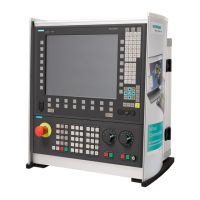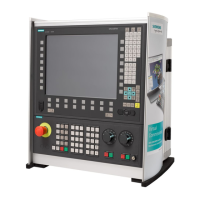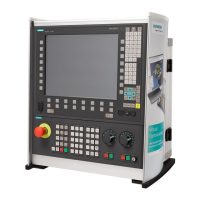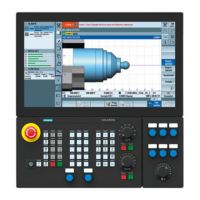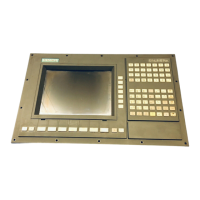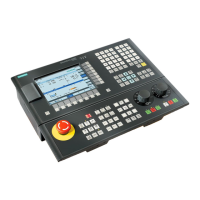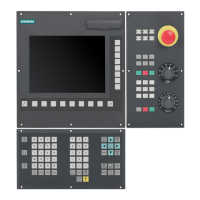01/2007
14.4 Frequency response measurements
14-433
© Siemens AG 2007 All Rights Reserved
SINUMERIK 840Di sl Manual (HBIsl) – 01/2007 Edition
14.4.1 Measurement of current control loop
The current control loop only needs to be measured for diagnostic purposes if
there is a fault or if no standard data was used for the motor/power module com-
bination, and which resulted in unsatisfactory speed controller frequency re-
sponses.
Caution
The user must take special safety measures when measuring the current
control loop (e.g. secure drive clamping) for hanging axes without external
counterweight.
Operating path for measuring the current control loop: Operating area switch-
over > Commissioning > Optimization/test > Current control loop
The following measurement functions are available for measuring the current
control loop:
Measuring type Measured variable
Reference frequency response
(downstream of the current setpoint
filter)
Torque–generating. Actual current value/Torque–
generating. Current setpoint
Setpoint step change
(downstream of the current setpoint
filter)
Measured variable 1: Torque–generating. Current
setpoint
Measured variable 2: Torque–generating. Actual
current value
The measurement sequence is divided into the following steps:
1. Setting the traverse range monitoring and the enable logic.
2. Selecting the measurement type
3. Setting the parameters, softkey ”Measuring parameters”
4. Displaying the measurement results, softkey ”Display”
Measuring parameters
S Amplitude
Magnitude of the test signal amplitude. Given in percent of the peak torque.
Values from 1 through 5% are suitable.
S Bandwidth
The frequency range analyzed with the measurement. The larger this value,
the finer the frequency resolution and the longer the measurement time. The
maximum value is given by the position control cycle (T
position
controller
):
Bandwidth
max
[Hz] = 1 / (2 * T
position
controller
[sec])
Example:
Position control cycle: 2 ms
Bandwidth
max
= 1 / ( 2 * 2*10
–3
) = 250 Hz
S Averaging
The accuracy of the measurement and measurement duration increase with
this value. A value of 20 is normally suitable.
S Settling time
This value represents the delay between recording of the measured data
and injection of the test setpoint and offset. A value of approx. 10 ms is rec-
ommended. A settling time which is too low will result in frequency response
and phase diagrams distortions.
Functionality
Operating path
Measuring
functions
Measurement
14 Drive O
timization with HMI Advanced

